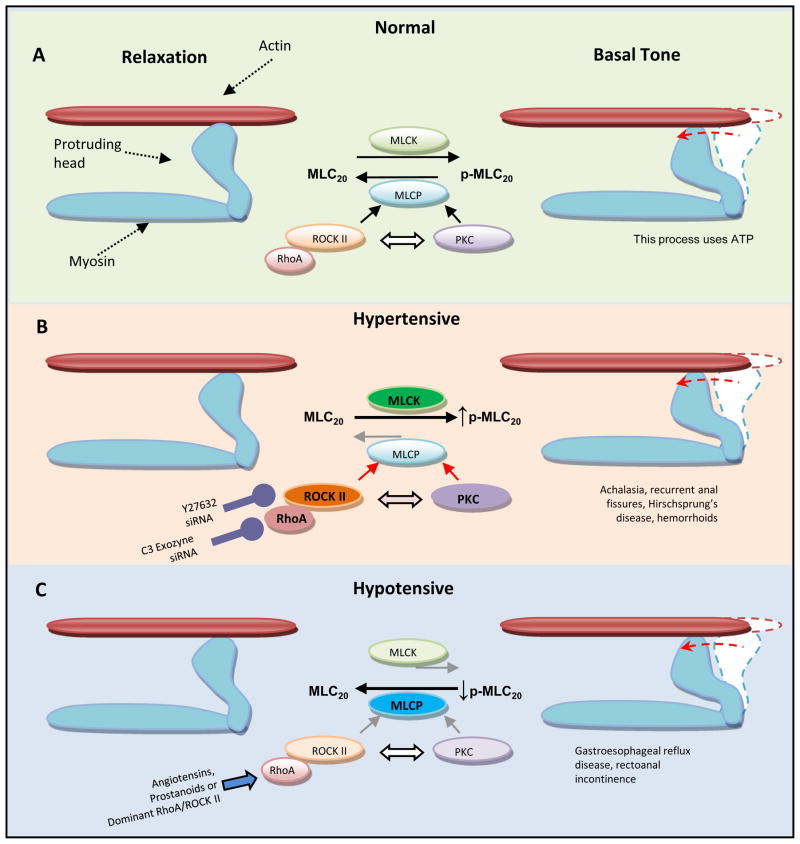Figure 4.
A model to explain the role of the constitutively active RhoA/ROCK II pathway in the basal state of the LES and IAS tone (normal), and in the pathophysiology of the hypertensive and hypotensive states associated with the corresponding motility disorders. A. In the basal state, RhoA/ROCK II displaces the equilibrium between MLCK and MLCP activities towards higher levels of p-MLC20 and maintained cross-bridge interactions with actin. B. In the hypertensive state, upregulation of the RhoA/ROCK II pathway via further displacement of the MLCK/MLCP equilibrium may lead to the still higher levels of p-MLC20 [106–108]. RhoA and ROCK II are targets for potential therapeutic interventions via traditional molecules such as C3 exozyme and Y27632 or via novel therapies such as selective siRNAs. C. In the hypotensive state, downregulation of the RhoA/ROCK II might displace the MLCK/MLCP equilibrium towards lower levels of p-MLC20 resulting in the hypotensive tonic smooth muscles [109–112]. In that case, the tone may be improved by the agonists (e.g. angiotensins and prostanoids) via RhoA/ROCK activation. Although, PKC also has the potential of inhibiting MLCP as explained above, its role in these tonic smooth muscles (as described above based on the humans and animal data in the LES and IAS), may be limited. In addition, as indicated, there appears to be a cross-talk between the RhoA/ROCK and PKC pathways. Exact relative contribution of these pathways and the nature of interaction between them remain to be determined.

